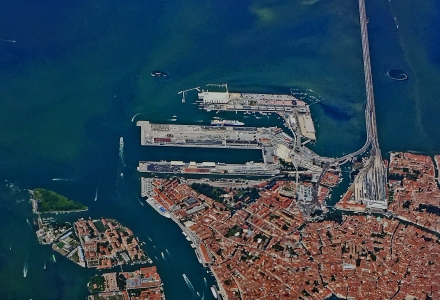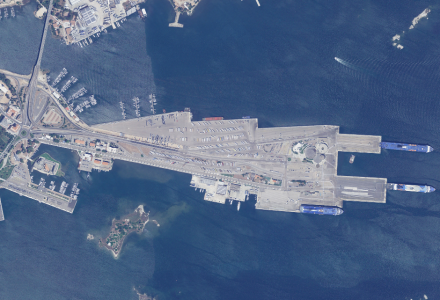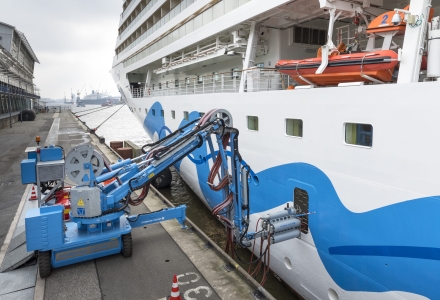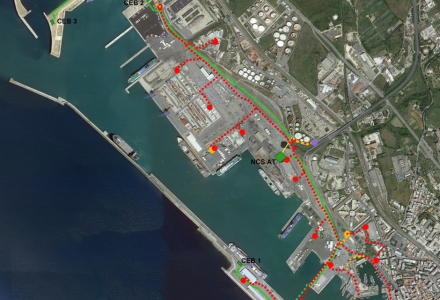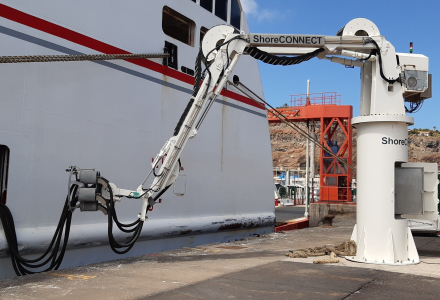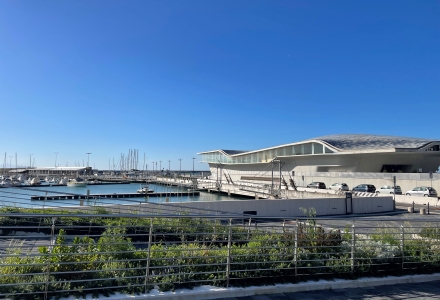
Cold Ironing: Pier VII, Pier V and Riva Traiana of the Port of Trieste
Client: Port Network Authority of the Eastern Adriatic Sea - Ports of Trieste and Monfalcone
Services in this project:
- Final design
Definitive engineering design service for the "Electrification works of the Riva Traiana, Pier VII, Pier V quays of the Port of Trieste".
The engineering work undertaken for the Cold Ironing system serving the South bank of Pier VII in Trieste allows the connection of cargo ships for the entire first 400 metres of the wharf by means of a mobile outlet installed in the overhang on the quay.
The solution proposed, which is an innovative element in the panorama of shore connection applications for cargo systems, makes it possible to overcome problems related to the lack of space for the installation of electrical distribution points on the quay and the reduced depth that can be achieved by excavation, because the quay is built on an artificial platform.
The system is expandable against an increase in available grid-side power by replicating the implemented solution to cover the remaining 400 metres of the entire bank.
The three quays of the Ro-Ro terminal at Pier V and Riva Traiana will each be equipped with a connection point consisting of a shore connection and the corresponding fixed-type Crane Management System (CMS).
This technical approach, which does not involve the use of mobile CMS systems, is made possible by the fact that only one quayside operator (the Danish shipping company Det Forenede Dampskibs-Selskab, or DFDS) has disclosed the characteristics of its vessels, which are standardised in terms of the adaptation of on-board equipment for shore-side power supply. Nevertheless, the use of Junction Boxes on the ground provides the possibility of connecting a mobile-type CMS in the future if necessary.
The engineering design of the Cold Ironing installations was performed in compliance with the IEC 80005-1 standard ("Utility connections in ports - Part 1: High voltage shore connection (HVSC) systems - General requirements").
For the installation serving container ships, energy is therefore made available at a voltage of 6.6kV and a frequency of 60Hz. Conversely, the systems serving the Ro-Ro terminal have an operating voltage of 11kV with the option of a 50Hz or 60Hz frequency.
The electrical and special installations are: the medium-voltage electrical system with transformation to low voltage and its distribution, the primary and secondary switchboards connected to the electrical distribution structure, the standard and emergency lighting network, the FM system, earthing, Uninterruptible Power Supplies (UPS), fire detection, frequency conversion for the power supply of for ships at 50Hz or 60Hz.
The project also includes the monitoring and control of all the installations serving the Cold Ironing system for the automation of ship-to-shore connection operations, reducing operating times and the risks associated with potential errors in the manoeuvring of electrical equipment.
For the automation system, the standard that has been implemented is IEC 80005-2 (Utility connections in port - Part 2: High and Low voltage shore connection systems - Data communication for monitoring and control). The mechanical systems have been engineered to guarantee the proper functioning of the electrical and electronic equipment installed in the newly constructed substations. These systems provide cooling and ventilation for switchboard rooms (frequency converters, MV switchboards, LV switchboards, uninterruptible power supplies and batteries) and mechanical ventilation for transformer rooms.
Connect with Our Team
Project data
- Country
- Italy
- Location
- Friuli Venezia Giulia
- Year
- 2021 - 2023
- Status
- Completed



